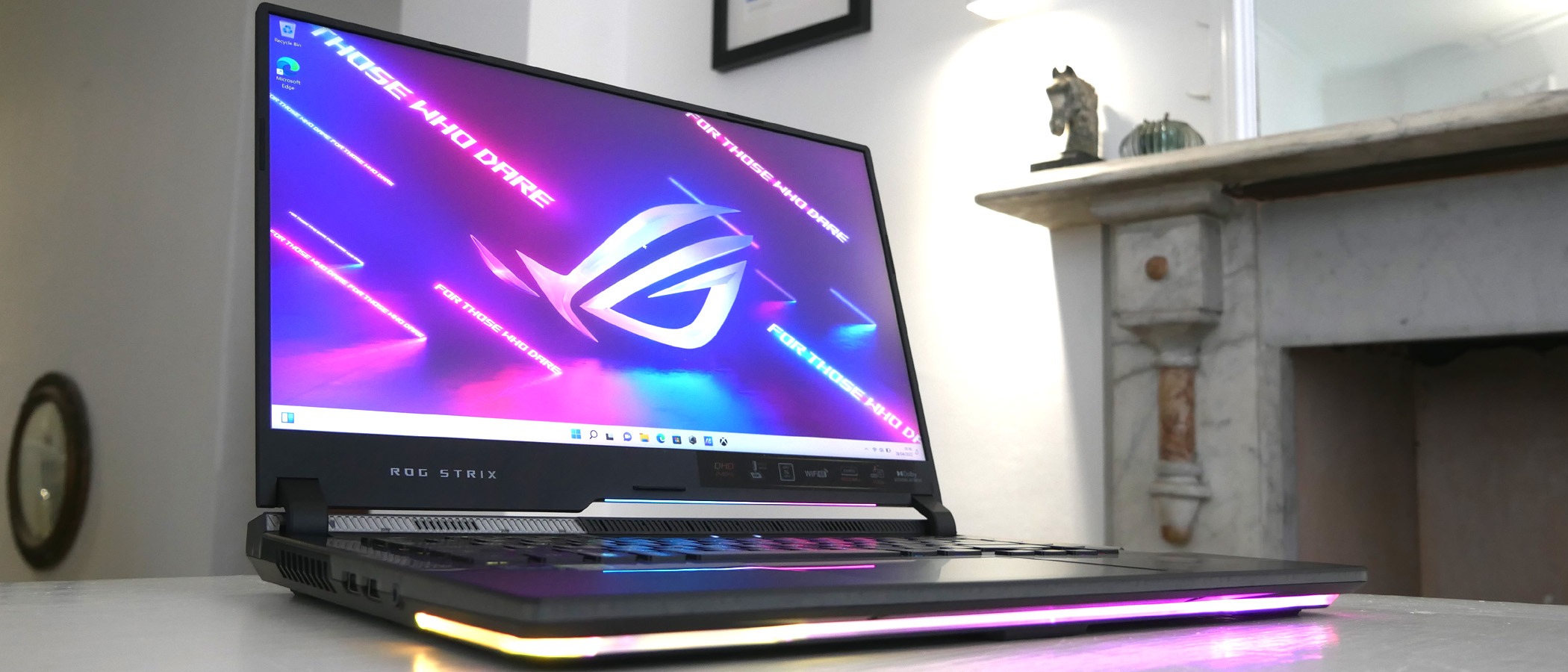Our Verdict
Light 'er up like a Christmas tree must have been the styling remit for the Asus ROG Strix Scar 15. This thing is a festival of RGB LEDs. As revised for 2022, it's also very powerful thanks to new Intel 12th Gen CPUs and the latest Nvidia RTX graphics. Solid build quality, decent battery life and a few fun frills are among the further highlights. However, the 240Hz 1440p screen is dull and disappointing, while the 2.3kg kerbweight is getting on a little for a 15.6-inch laptop.
For
- Really strong performance
- Solid chassis build
- Good battery life
Against
- Disappointing screen quality
- Unsubtle gamery styling
- Not exactly featherweight
Why you can trust Creative Bloq
If gaming-style laptops aren’t your thing, may we politely suggest you jog on past the newly revised for 2022 Asus ROG Strix Scar 15. This thing is festooned with RGB LED lighting.
It also confirms that Intel is right back in the game. Last year’s Scar 15 ran AMD’s Ryzen 9 5900HX eight processor. For the 2022 model, that chip has been unceremoniously defenestrated in favour of Intel's mighty new Core i9-12900H 14-core monster. Sorry, AMD.
If gaming laptops really are your think, take a look at our guide to the best laptops for gaming in 2022. We also have guides for the best gaming headphones and the best gaming monitors, so we have you covered.
CPU: Intel Core i9-12900H (14-core)
Graphics: Intel Iris Xe, Nvidia RTX 3070 Ti 8GB
RAM: 16GB
Screen: 15.6-inch, 2,560 x 1,440, 240Hz, IPS LCD
Storage: 2TB PCIe 4.0 SSD
Ports: 1x USB Type-C, 1 x USB Type-C with Thunderbolt, 2x USB-A, HDMI 2.0, ethernet, 3.5mm audio jack, Keystone
Size: 35.4 x 25.9 x 2.72 cm (W x H x D)
Weight: 2.3 kg
The performance uplift isn’t quite as epic as the step from eight cores to 14 cores implies. But as you’ll see this is a very, very powerful mobile CPU. It’s accompanied here by an Nvidia RTX 3070 Ti graphics chip, making for an overall combo that packs serious punch for just about any application you can imagine, from gaming to video production.
Of course, you’d expect all that from a high performance gaming-orientated 15.6-inch portable at this price point. More novel is the Strix Scar’s design and peripheral features. It’s absolutely rammed with the aforementioned RGB lighting, has a beefy 90Wh battery, a 240Hz 1440p screen and some unusual frills including Asus’s magnetic Keystone digital key that has an air of Marvel Avengers. Yes, really.
Of course, none of that necessarily makes the Asus ROG Strix Scar 15 a great laptop. So, the question is whether the Scar adds up to the sum of its undoubtedly impressive parts. There’s only one way to find out.
Asus ROG Strix Scar 15 (2022) review: features and design
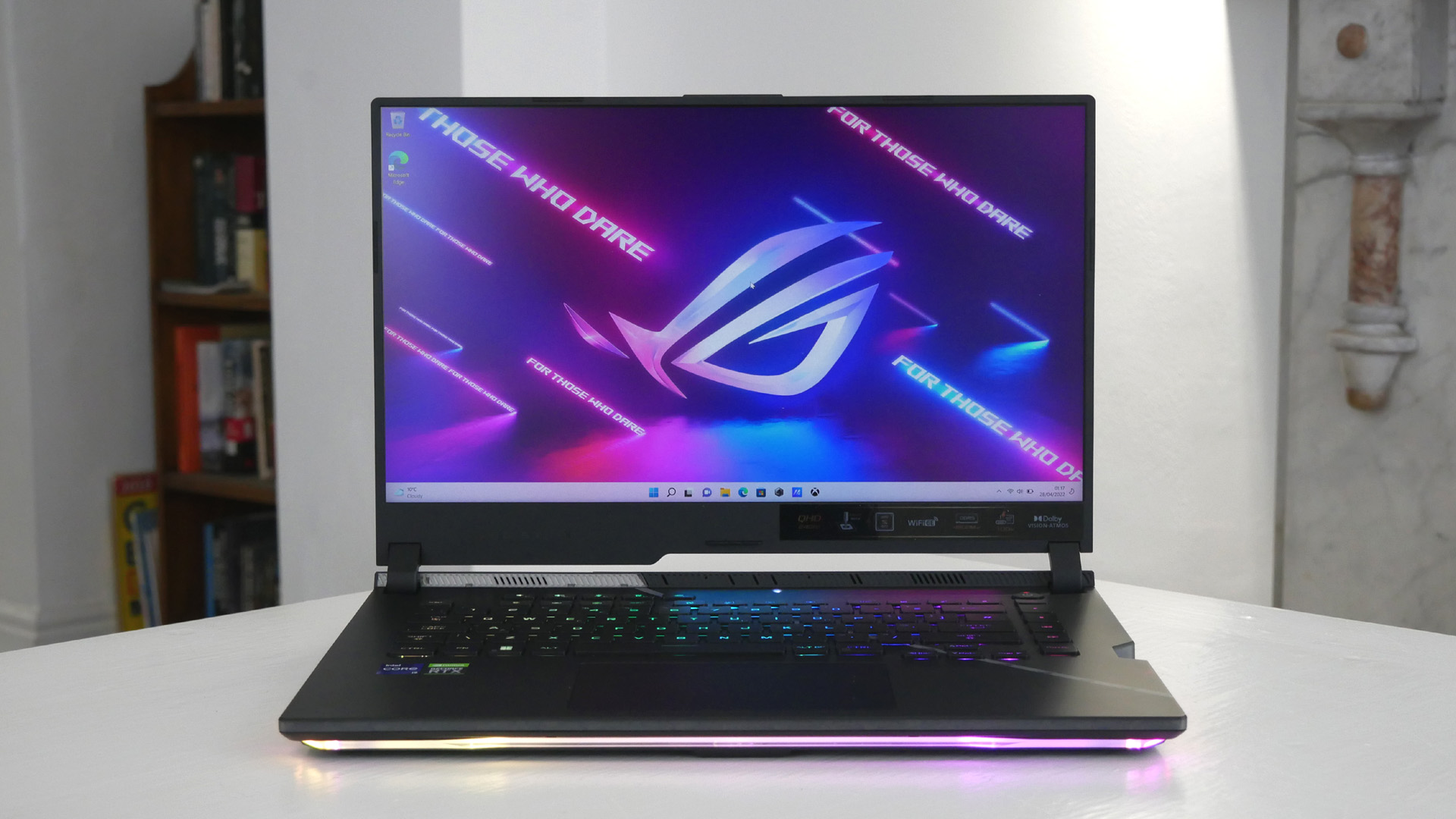
The Asus ROG Strix Scar 15 gives every impression picking up the Xzibit Yo Dawg meme, applying it to RGB lighting and then positively sprinting away with it. Asus heard you like RGB lighting, that’s for sure. For starters the keyboard has full per-key RGB backlighting. Then there’s a massive RGB bar running right across the front of the chassis and into roughly one third of the chassis sides.
Subtle it ain’t. You can, of course, disable the fully programmable light show if you prefer. But then you’re paying for it. So, if it’s of absolutely no appeal, it probably makes sense to shop elsewhere. The rest of the aesthetic is fairly if not quite so irrepressibly gamery.
The chassis is plastic, but very sturdy and stiff, with a mix of very dark grey for most of the structure and a triangle of funky translucent plastic around part of the keyboard. The keyboard bed is pretty stable, but not quite as rock solid as the very best.
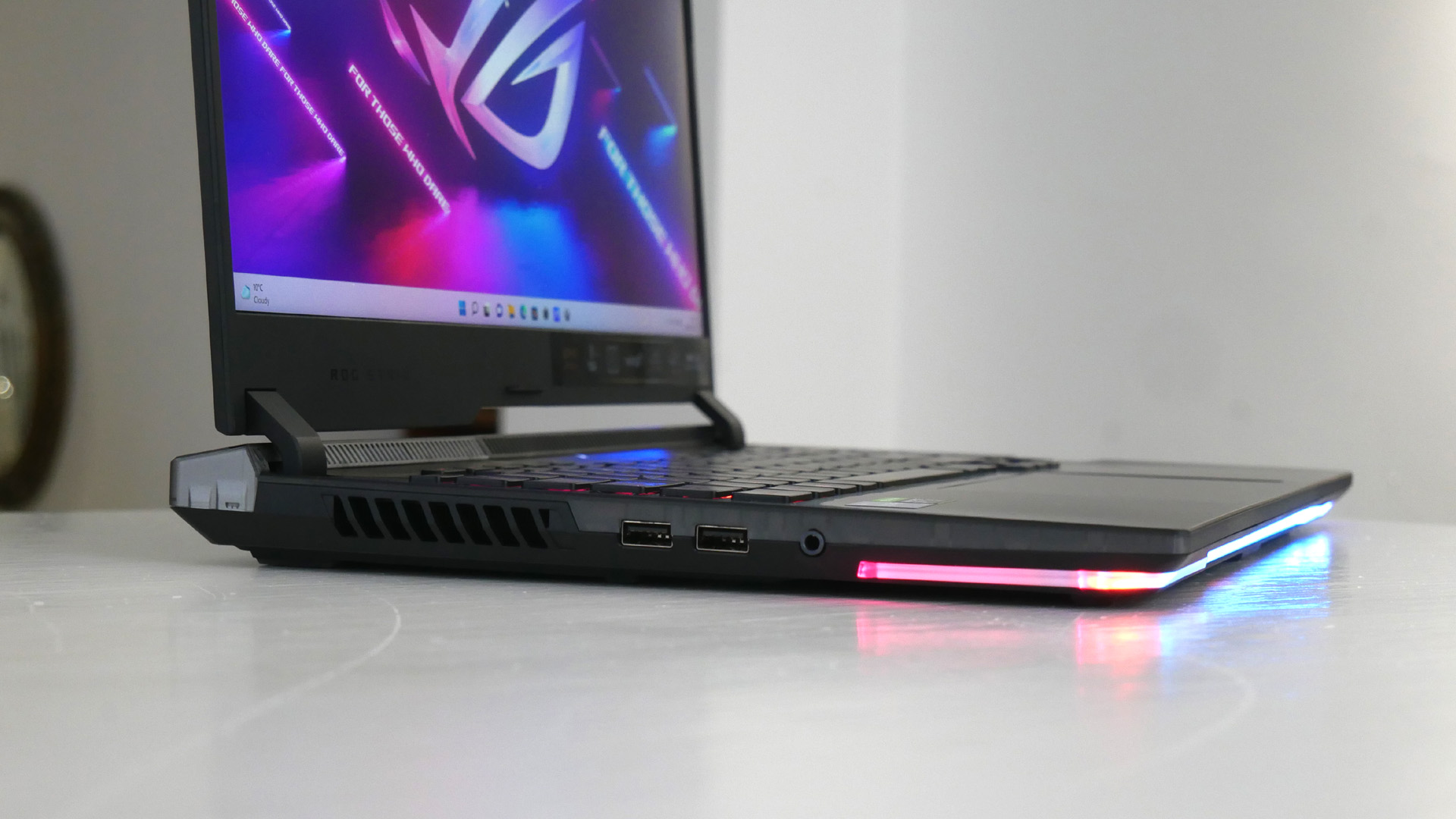
Overall heft is also an issue with the Scar tipping the scales at 2.3kg and coming in over 2.7cm thick. A thin-and-light laptop this most certainly is not, even if the bezels are reasonably slim on three sides of the display. Of course, the generous proportions allow for some beefy liquid-metal augmented cooling, not to mention a large 90Wh battery.
Speaking of the screen, it's a 1440p IPS item with 2,560 by 1,440 pixels, which is a decent compromise between providing visual detail and space for productivity purposes and not overloading the GPU. That said, even with the Nvidia GeForce RTX 3070 Ti graphics chip on board, the panel's 240Hz refresh is a bit optimistic.
As PC laptops go, things don't come an awful lot quicker
That's true even with the Car's MUX switch, which boosts performance by removing the need to route the RTX chip through the CPU's integrated graphics. Even then, you're just not going to hit those kinds of frame rates in most modern games with the details ramped up.
I find a similar performance with the mighty Intel Core i9-12900H CPU, one of intel's new 12th Gen beast running six performance cores and eight efficiency cores. But that processor along with the 2TB PCIe 4.0 Samsung SSD and 16GB of DDR5 memory certainly do bode well for all kinds of productivity and content creation tasks. As PC laptops go, things don't come an awful lot quicker.
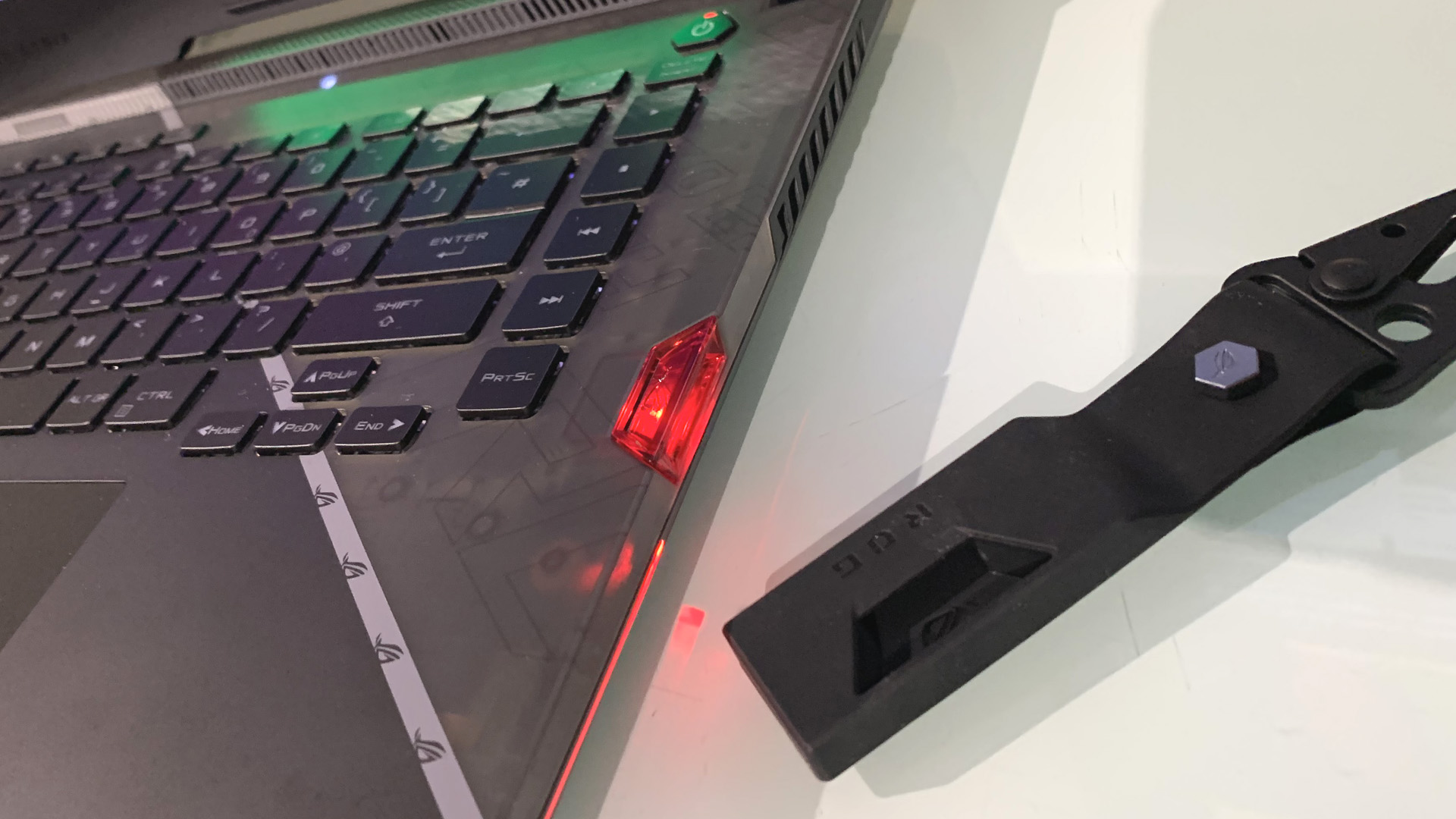
Connectivity is well catered for with a pair of USB-C ports, one of which does the full Thunderbolt 4 thing with 40Gbps of speedy data transfer capability (handy for transferring video files), a pair of old school USB-A ports, HDMI, ethernet and a headphone jack.
The final flourish involves Asus's Keystone lock. It's a small magnetic security 'key' that slots into the side of the chassis and comes with a slightly geeky rubber keychain holster for safe storage.
The idea is that you whip the Keystone out when stepping away from the laptop, the latter then entering a stealth mode hiding all windows and muting audio or also entering the Windows lockscreen. The Keystone itself glows red when attached and has a whiff of Marvel Infinity Stone in its look and nomenclature. Maybe that's coincidental, we may never know.
Asus ROG Strix Scar 15 (2022) review: price
At around $2,199 or £2,398 as configured here, the Asus ROG Strix Scar 15 2022 looks a little pricey in the UK currently. But overall, it's competitively priced for this class of laptop. Certainly, you'll pay far more for similar components in a thinner and lighter system like the Razer Blade 15 of Dell's Alienware X15. The heftier Alienware M15 is broadly comparable in price.
Asus ROG Strix Scar 15 (2022) review: performance
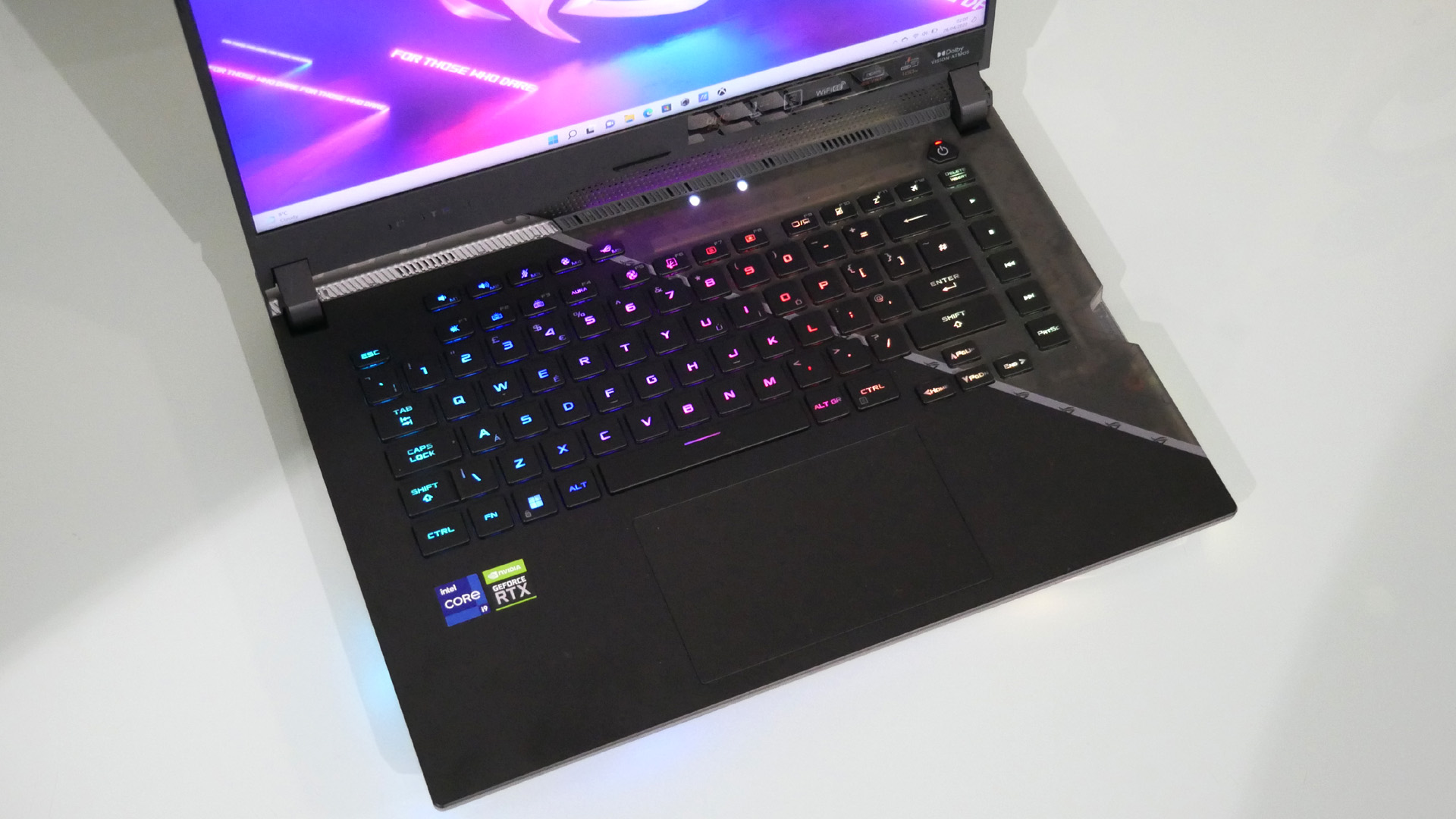
3DMark: Night Raid: 53,462; Fire Strike: 22,908; Time Spy: 10,441
Cinebench R20 Multi-core: 6,674 points
GeekBench 5: 1,840 (single-core); 10,902 (multi-core)
PCMark 10 (Home Test): 7,557 points
Battery Life (1080p movie test): 10 hours and 20 minutes
Total War: Three Kingdoms: (1080p, Ultra): 86 fps; (1080p, Low): 232 fps
Metro Exodus: (1080p, Ultra): 80 fps; (1080p, Low): 158 fps
Crystal Disk Mark: Read 6,965MB/s, write 5,119MB/s, 4K read 78MB/s, 4K write 185MB/s
4K x265 (HEVC) encode: 12fps
The combination of Intel Core i9-12900H 14-core, 16GB of DDR RAM and a super fast 2TB PCIe Gen 4 SSD really delivers. The PC Mark score of over 7,500 points in particular is impressive. Buy way of comparison, it's miles faster than Asus's own TUF Gaming F15 with the similar very similar 12700H chip, which hits a mere 5,800 points in the same test.
Add in the undoubted graphics power of the RTX 3070 Ti GPU, which is clocked here at a very healthy 1,410MHz Boost and you have a very powerful portable rig. It positively tears through video encodes and makes light work of importing large batches of images for editing.
Strictly speaking, the most demanding users would want to consider an upgrade to 32GB of memory. But that is an available option. Unsurprisingly, with all that power comes heat. The fans on the Asus ROG Strix Scar 15 are plenty noisy. If you want this kind of performance with more discretion, it's probably not available with a laptop PC. Only Apple's MacBook Pros can pull that trick off.
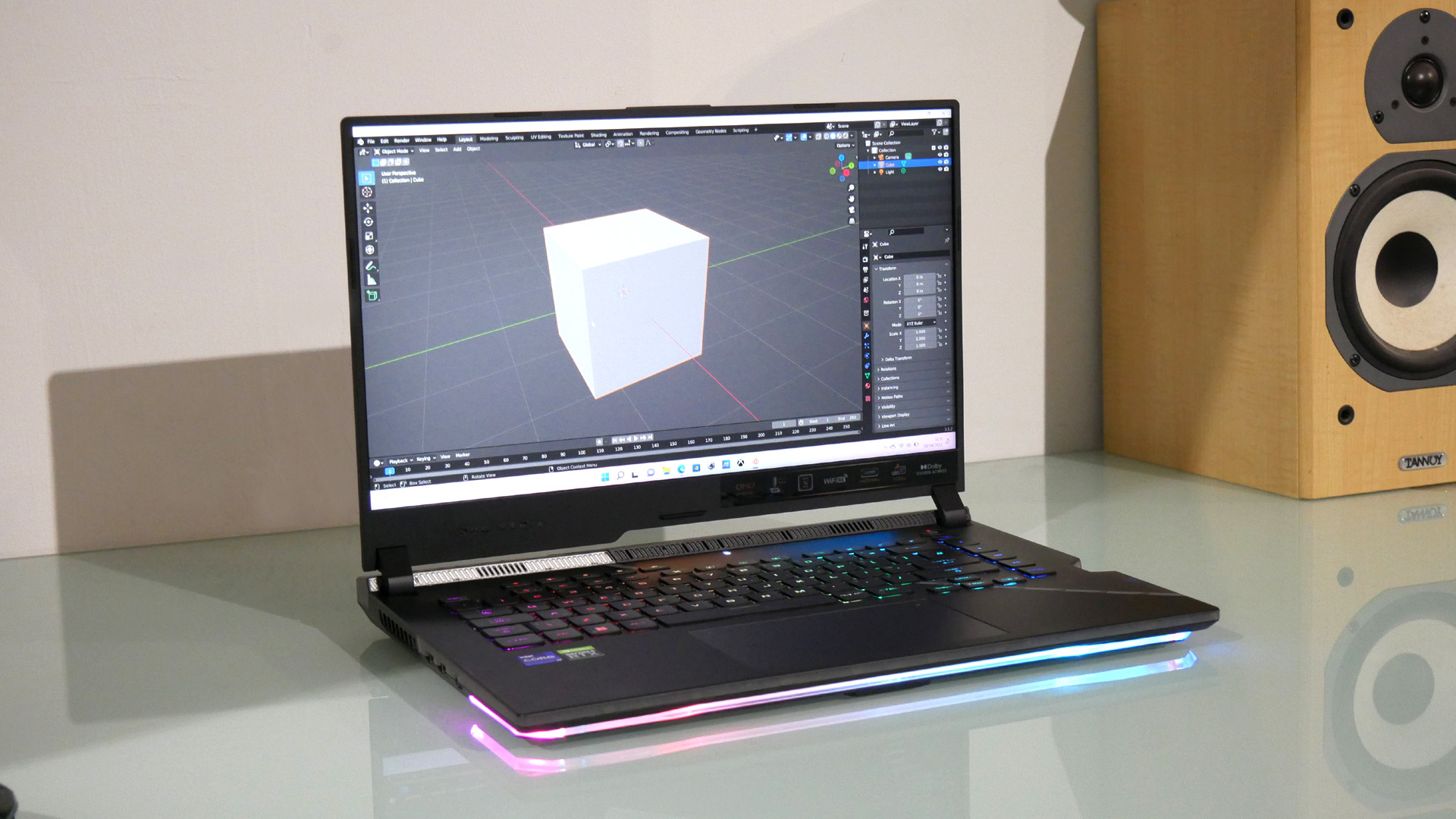
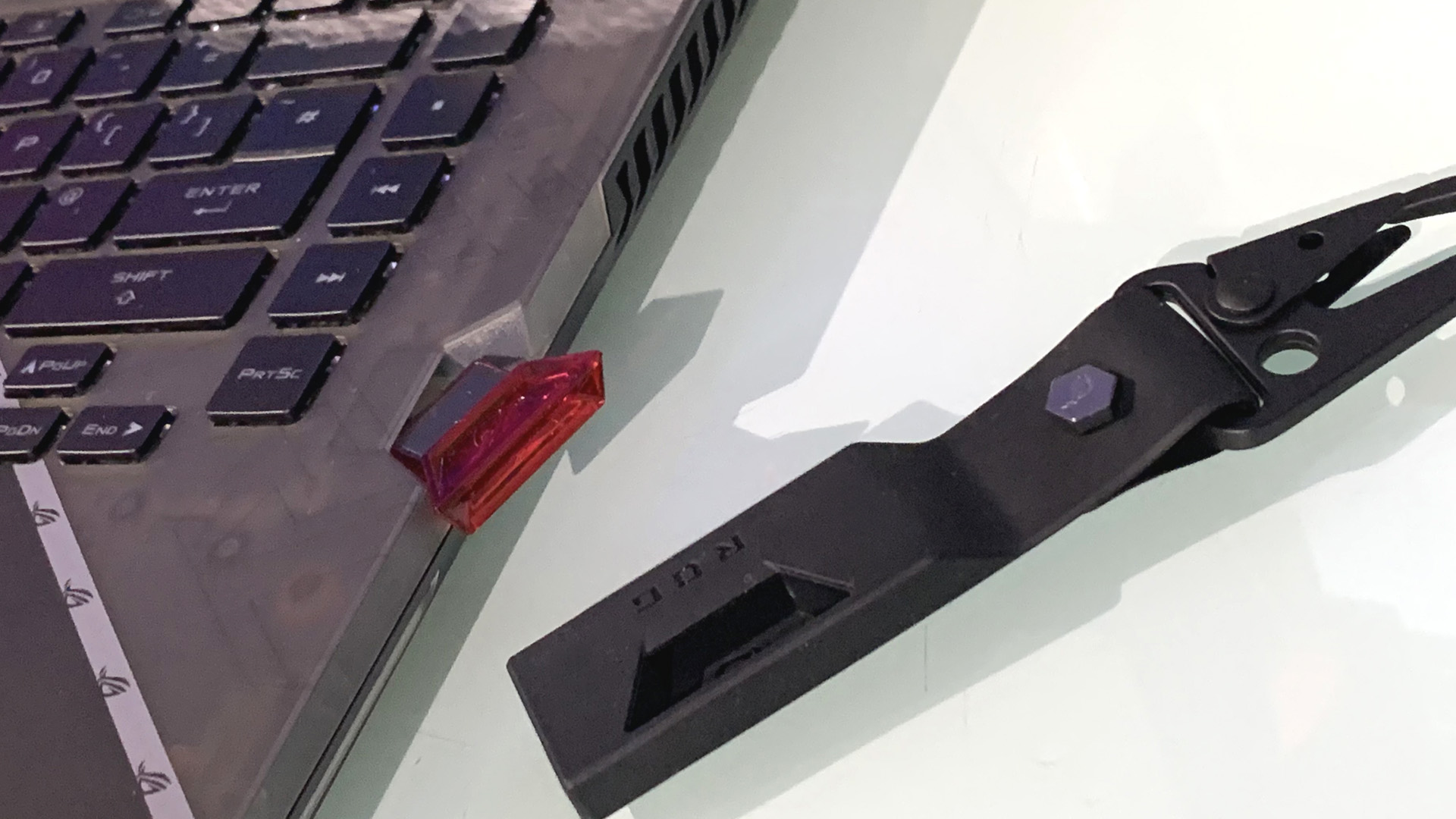
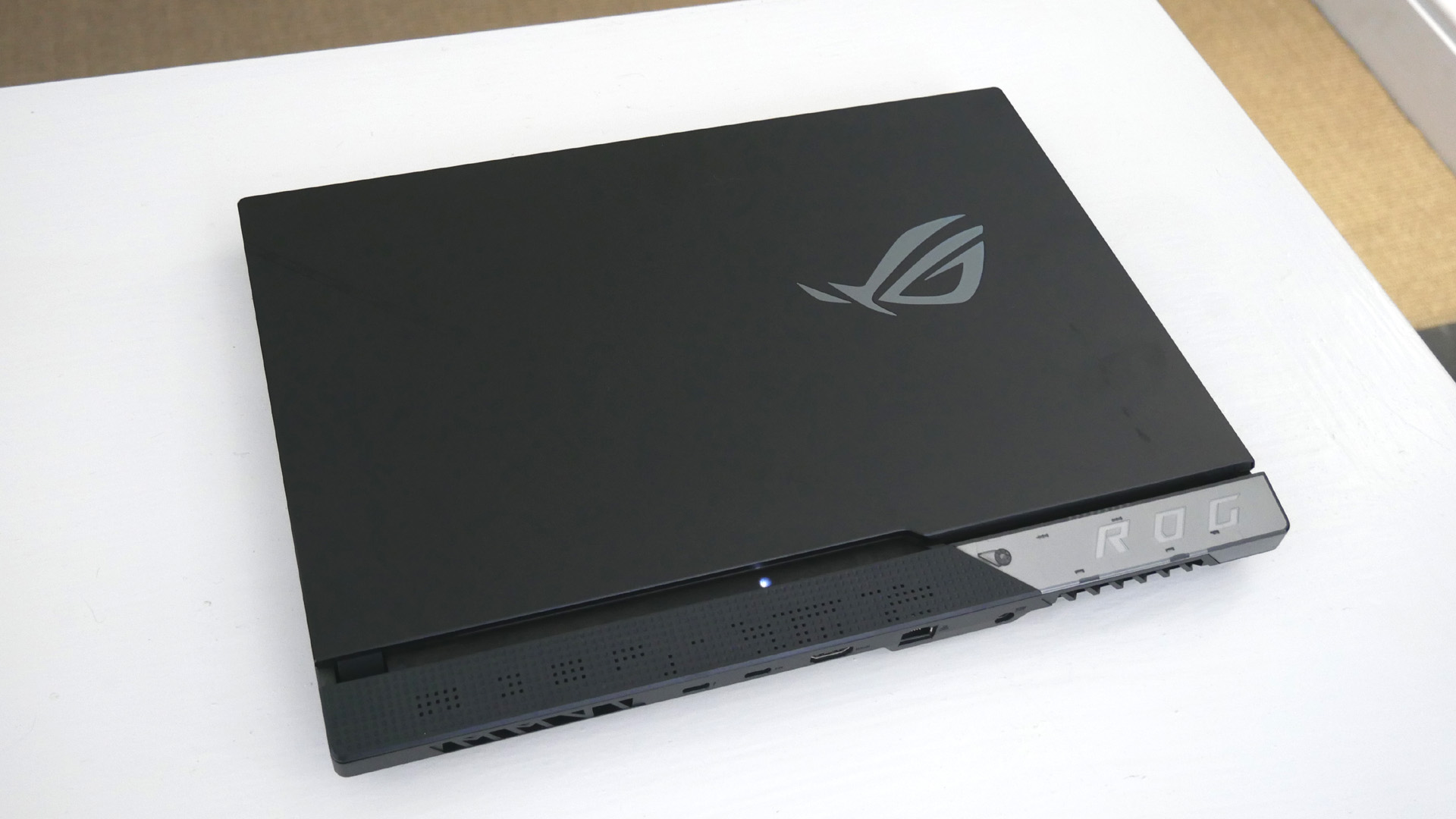
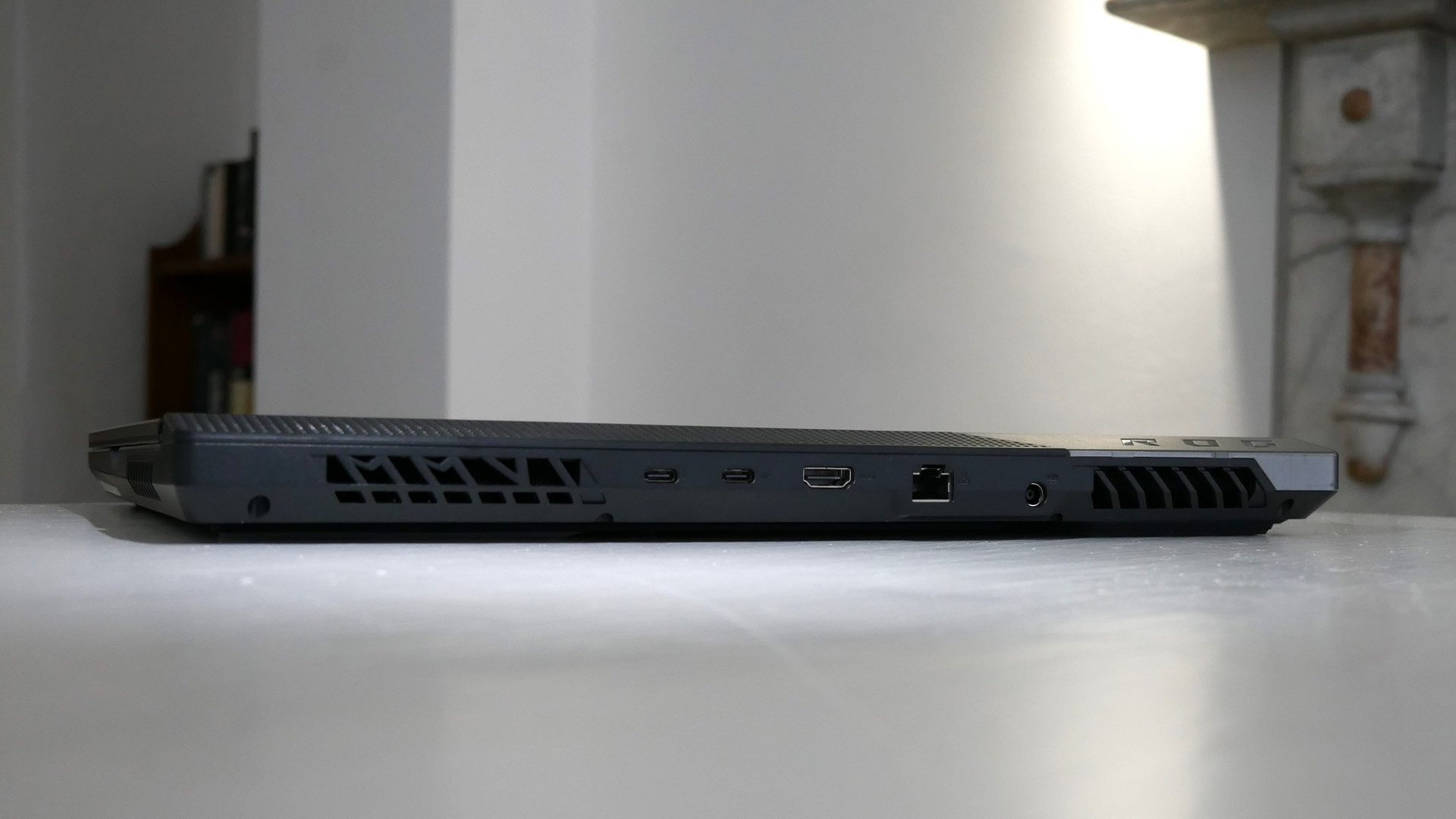

Battery life of over 10 hours for video playback from such a powerful laptop PC is also very impressive, albeit once again the MacBook Pro tears the Scar apart when it comes to longevity away from the mains.
Less impressive is the 15.6-inch 1440p display. Yes, the pixel response is good and with 240Hz refresh it's super slick with virtually non-existent latency. But it's also rather dull and lacking in zing, brightness and vibrancy. It's hopeless for using outdoors, that's for sure.
For gamers, you could argue it's an acceptable trade off. The speed is worth some compromise in terms of visual punch. But for productivity and content creation, well, the 240Hz refresh is total overkill and the dingy image quality a bit of a bummer.
Should you buy the Asus ROG Strix Scar 15 (2022)?
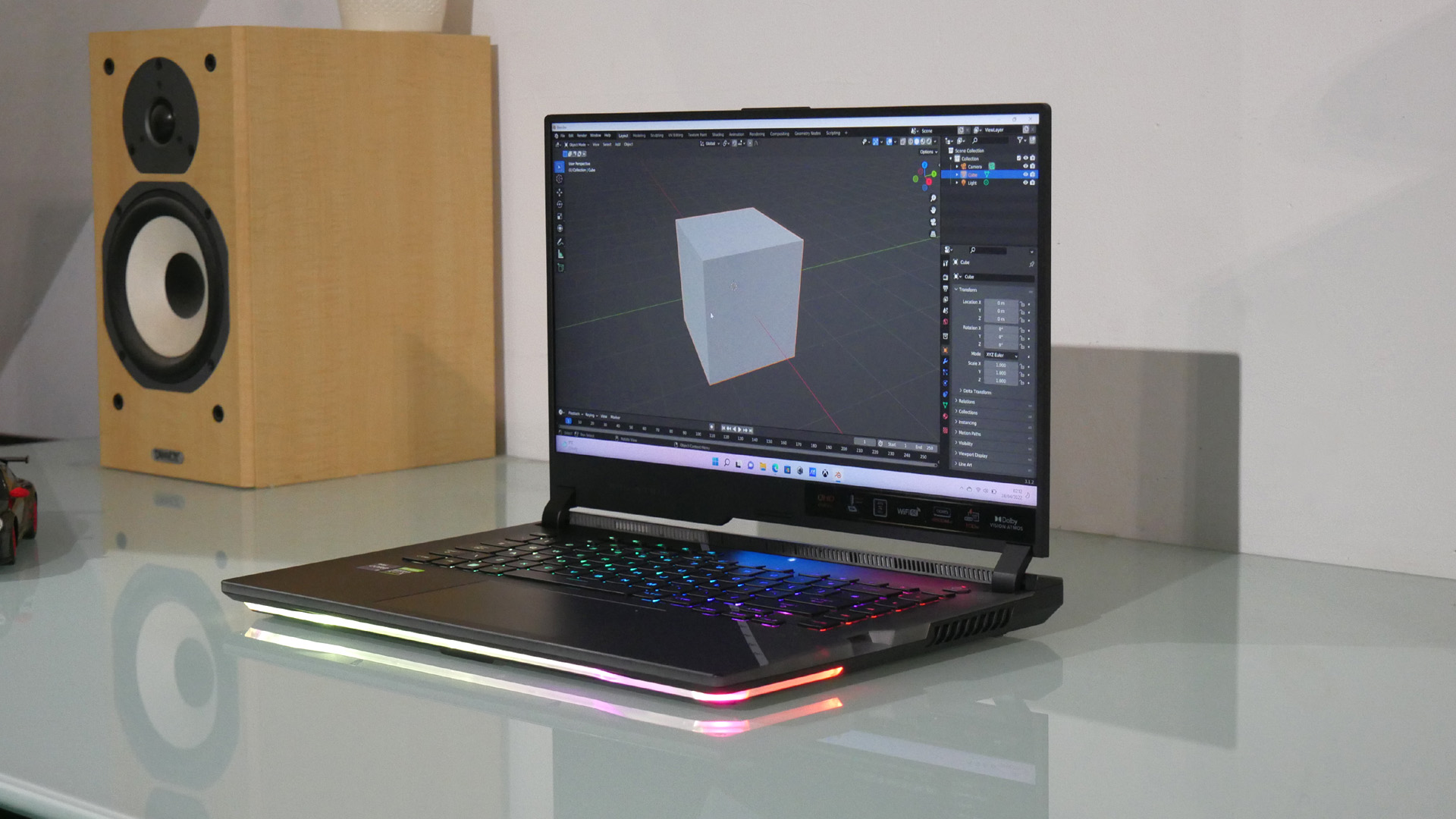
The revised for 2022 Asus ROG Strix Scar 15 packs a serious punch thanks to its fancy new Intel 12th Gen CPU, powerful Nvidia graphics and zippy PCIe 4.0 SSD. It's about as good as it gets this side of $4,000 / £4,000 for pure performance for pretty much any PC workload.
It's also an impressive gaming platform thanks to a display with 240Hz refresh and 1440p resolution. Problem is, that nippy 15.6-inch panel looks rather dull, significantly compromising the Scar's appeal as an all-round device for both gaming and content creation. It's a pity, because it's well built and offers great battery life for such a powerful portable PC.
Read more: The best laptops for graphic design

Thank you for reading 5 articles this month* Join now for unlimited access
Enjoy your first month for just £1 / $1 / €1
*Read 5 free articles per month without a subscription

Join now for unlimited access
Try first month for just £1 / $1 / €1
out of 10
Light 'er up like a Christmas tree must have been the styling remit for the Asus ROG Strix Scar 15. This thing is a festival of RGB LEDs. As revised for 2022, it's also very powerful thanks to new Intel 12th Gen CPUs and the latest Nvidia RTX graphics. Solid build quality, decent battery life and a few fun frills are among the further highlights. However, the 240Hz 1440p screen is dull and disappointing, while the 2.3kg kerbweight is getting on a little for a 15.6-inch laptop.

Jeremy has been writing about technology since the 90nm Netburst era (Google it!) and enjoys nothing more than a serious dissertation on the finer points of input lag and overshoot followed by a forensic examination of advanced lithography. Or maybe he just loves machines that go 'ping!'. He has written for a variety of publications, including TechRadar, The Independent, Digital Camera World, T3, PC Gamer, GamesRadar+.
